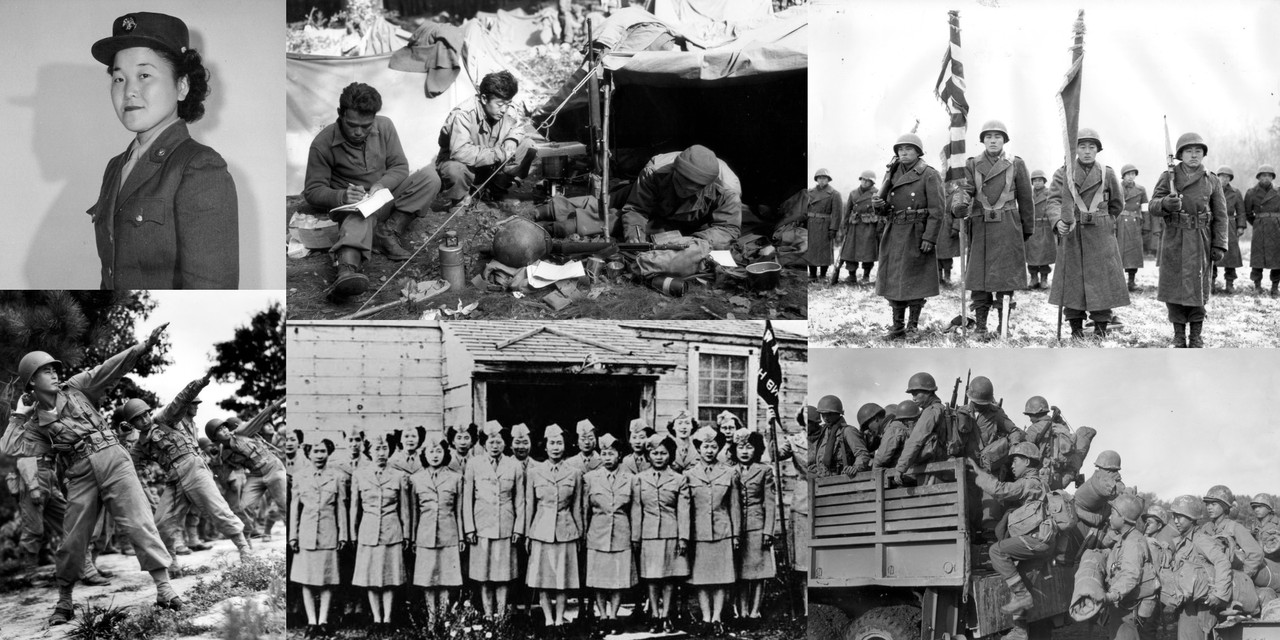During the Second World War, Japanese American soldiers fought two battles at the same time – one overseas and one against discrimination at home. While thousands of these young men volunteered to risk their lives for the United States, their families were imprisoned in concentration camps, victims of persecution, racial segregation, and injustice.
From Immigration to Exclusion
Japanese immigration to the U.S. began in the late 19th century, with many settling on the island of Hawai’i and along the West Coast. These early immigrants, known as Issei (first generation), arrived mostly to work on sugar plantations and built tight-knit communities despite facing harsh discrimination. Their children, born in the United States, were called Nisei (second generation Japanese-Americans) and were American citizens by birth.
Despite their contributions to American society, Japanese Americans faced exclusionary laws that prevented them from owning land, denied citizenship to the Issei, and even outlawed interracial marriages. Suspicions against Japanese Americans reached their peak after the attack on U.S. naval base Pearl Harbor, carried out by the Japanese Empire’s airforce on 7 December 1941.
Executive Order 9066 and Incarceration
In February 1942, President Franklin D. Roosevelt signed Executive Order 9066, forcibly removing around 120,000 Japanese Americans – many of them U.S. citizens – from their homes to concentration camps. Families lived in harsh conditions, surrounded by guards and barbed wire. Many lost their homes, jobs, and dignity. The government labeled the camps “relocation centers,” hiding the injustice behind euphemisms.
Fighting for a Country That Imprisoned Them
Despite their treatment, over 33,000 Japanese Americans served in the U.S. military. The 100th Infantry Battalion and the 442nd Regimental Combat Team fought in Italy, France, and Germany and contributed to the Allied effort of liberating Europe. Their campaigns included breaking through the German Gothic Line in Italy and rescuing the “Lost Battalion” in France. More than 30 men were killed and many more wounded during the rescue of just over 200 of these soldiers in the Vosges Mountains in the northeast of France. At the end of the campaign, the 442nd Regiment counted more than 800 casualties.
Meanwhile, in the Pacific and Asia, the U.S. Military Intelligence Service (MIS) had a vital but secret role. Japanese American linguists translated documents, interrogated prisoners, and played a crucial role in the U.S. war effort in the Pacific. Their post-war work during the Allied occupation of Japan (2 September 1945 to 28 April 1952) helped rebuild the country and foster U.S.-Japanese relations.
Women’s Changing Roles
Japanese American women also contributed to the war effort. While barred from combat, some served in the U.S. Women’s Army Corps (WAC) and the Army Nurse Corps. Others supported the war from within the camps or relocated to fill labor shortages. The war forced a shift in traditional gender roles and opened up new educational and career opportunities for women.
After the war
Upon returning home, many Nisei veterans faced continued racism, vandalism, and exclusion. Yet their service helped break racial barriers. In 1952, the Issei were finally granted the right to become U.S. citizens. Later, in 1988, the U.S. government issued an official apology and paid reparations to survivors of American concentration camps during World War II. After 9/11, Japanese Americans were among the first to speak out against discrimination toward Muslim and Arab Americans, vowing that the injustices of WWII would never be repeated.
Together with the 100th Infantry Battalion, the 442nd Regimental Combat Team became the most decorated unit in U.S. military history for its scope and length of service, a testament to the courage and dedication of these soldiers despite the discrimination they endured.
Sources:
History in a Minute – Go For Broke
Japanese Americans in military during World War II | Densho Encyclopedia
Nisei Legacy Tours - Home - Follow the Go for Broke spirit
100th Infantry Battalion Veterans (Club 100) | Honolulu, Hawai‘i
